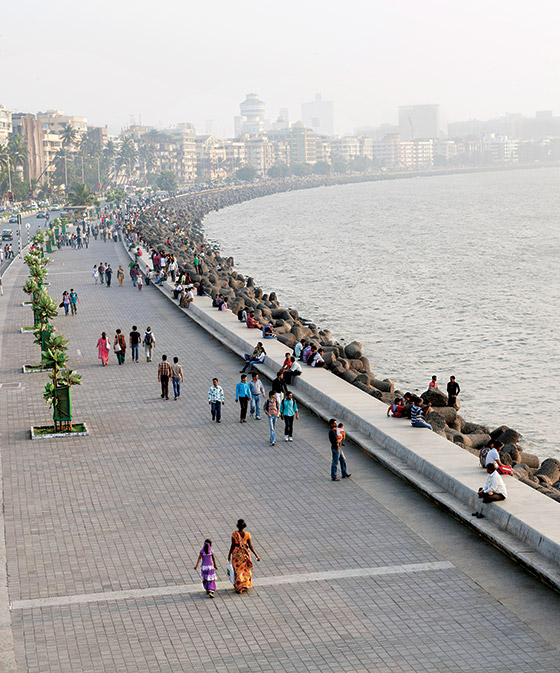 |
Promenade along Marine Drive.
(Photo: Duncan McKenzie/Getty Images) |
Mumbai is to India what New York is to the United States: its most populous city and its financial capital, a bastion of higher education and cosmopolitan thinking, a mosaic of diverse ethnicities and religions. Mumbai endured its own 9/11—dubbed 26/11—and emotions still run raw. (That a Pakistani court just released on bail one of the Lashkar-e-Taiba militants accused of puppeteering the devastating 2008 attack that left more than 160 people dead doesn’t help.) This is a city that lives with—and off—its one percent, for whom India’s spectacular economic growth has spurred a literal race to the top: When completed next year, the Financial District’s 117-story World One Tower will be the tallest residential building on Earth—never mind that 41 percent of Mumbaikars still scrape by in slums. The city’s most vulnerable have been largely ignored—consider the 13 years it took for Bollywood megastar Salman Khan to be convicted of killing a homeless man in a hit-and-run. Overpopulation, imploding infrastructure, the continued oppression of women, and the recent recriminalization of gay sex are serious problems. And yet the locals are undeniably hopeful for a sustainable middle-class existence (and the schools and accessible culture that come with it). By all accounts, the city is getting there.